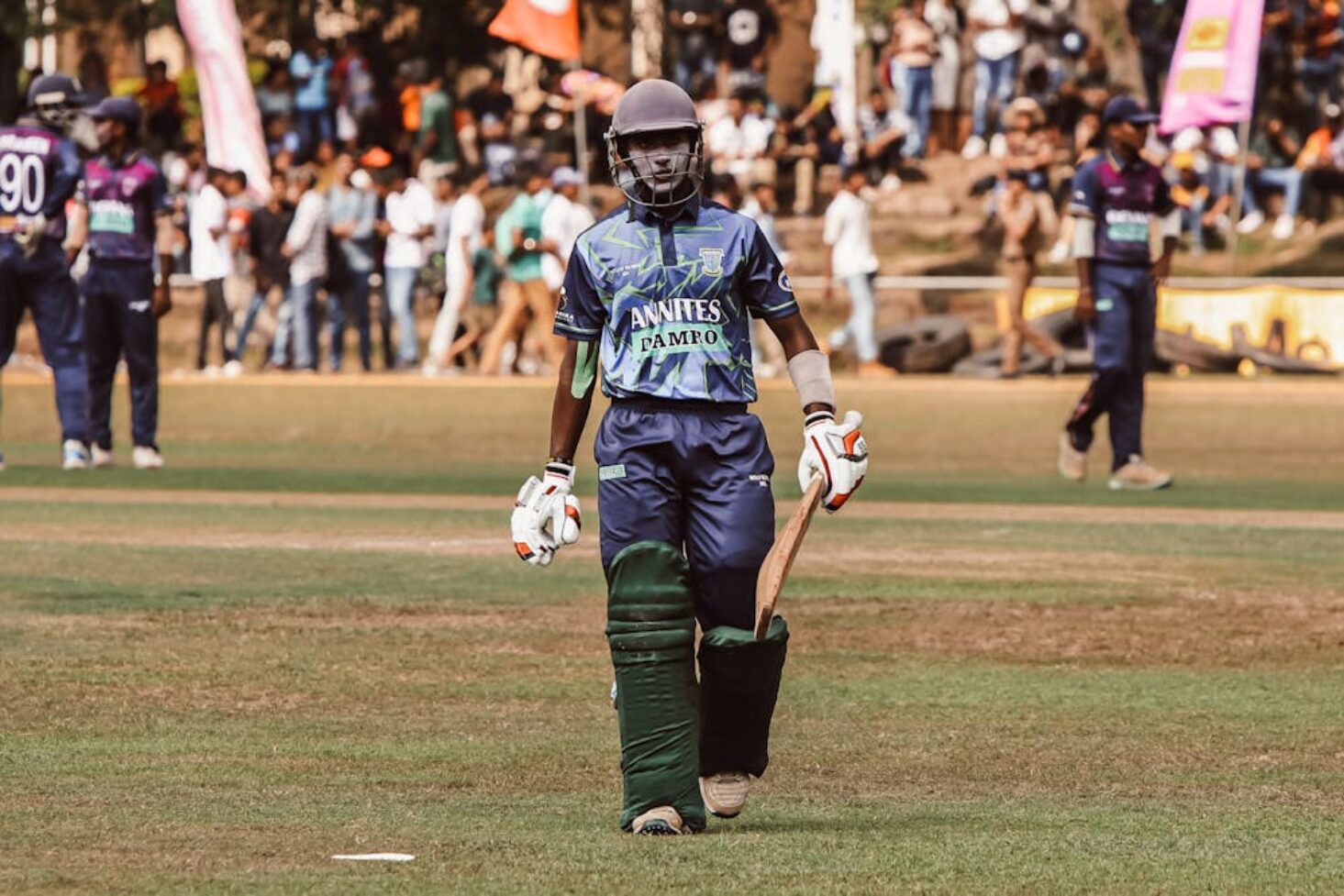
How Many Players Are There In A Cricket Team
Cricket, a popular sport played worldwide, involves teams competing against each other in matches that can vary in format and duration. The number of players in a cricket team depends on the specific format being played. Understanding the format of cricket is essential to determine the team size and players involved.
Here is a breakdown of the different formats and their respective team sizes.
In Test matches, which are the longest format of the game, each team consists of 11 players. This includes specialist batsmen, bowlers, all-rounders, and a wicket-keeper.
One-Day Internationals (ODIs), as the name suggests, are limited-overs matches played in a single day. In ODIs, each team also comprises 11 players.
Twenty20 Internationals (T20Is) are the shortest format of the game, known for its fast-paced and thrilling action. In T20Is, each team is allowed a total of 11 players on the field.
Roles and positions in a cricket team vary based on the skills and expertise of the players. Batsmen are responsible for scoring runs, while bowlers aim to dismiss the opposition by taking wickets. All-rounders contribute with both batting and bowling abilities, and the wicket-keeper is responsible for catching the ball and stumping the batsmen.
Teams can have substitutes and reserves who can replace players in case of injuries or tactical decisions. These substitutes can be fielders, batsmen, or bowlers, depending on the team’s requirements.
It is important to note that team sizes can vary in different cricket contexts. In domestic cricket, such as domestic leagues and tournaments, team sizes may differ based on specific regulations. Similarly, junior cricket and women’s cricket may have variations in team sizes to cater to different skill levels and player requirements.
Cricket Team

In a cricket team, the number of players on the field is eleven. This includes a captain and ten other players who perform various roles, such as batsmen, bowlers, and fielders.
Maintaining balance and ensuring fair gameplay are essential, which is why there is a fixed number of players. Each player utilizes their skills and expertise in their respective positions, contributing to the team’s success.
The team composition may vary based on the game’s format, but the standard number of players remains the same. Understanding the number of players in a cricket team is crucial for comprehending the dynamics and strategies of the game.
Understanding the Format of Cricket
Cricket, a sport beloved by millions, has a fascinating format that sets it apart. In this section, we’ll delve into the different formats of cricket, including test matches, one-day internationals, and Twenty20 internationals. Each sub-section offers a unique twist on the game, with varying match lengths and playing strategies.
Prepare to explore the diverse formats that make cricket a thrilling and unpredictable sport.
Test Matches
Test Matches in cricket are the longest and oldest form of the game. They are played over five days and are considered the pinnacle of the sport. Test Matches involve two teams, each consisting of eleven players. The players are divided into various roles and positions, such as batsmen, bowlers, all-rounders, and a wicket-keeper.
In Test Matches, each team gets two innings to bat and two innings to bowl. The team that scores the most runs across both innings wins the match. Test Matches require endurance and strategic skills from players as they test their abilities over extended periods.
Fact: The longest Test Match in history lasted for 12 days, played between England and South Africa in 1939.
One-Day Internationals
In One-Day Internationals (ODIs), each cricket team consists of 11 players. These players are selected based on their skills and expertise in batting, bowling, and fielding. Below is a breakdown of the roles and positions in an ODI cricket team:
Batsmen: 3-5 Bowlers: 3-4 All-rounders: 1-2 Wicket-keeper: 1
In ODI cricket, teams also have substitutes and reserves who can be called upon if a player gets injured or falls ill during the match. The team sizes may vary in other forms of cricket such as domestic cricket, junior cricket, and women’s cricket.
Teamwork is crucial in cricket as it allows players to complement each other’s skills and strategies, leading to success on the field.
Fact: One of the most memorable ODI matches took place in 1999 when Australia chased down a target of 434 runs, the highest ever in ODI history.
Twenty20 Internationals
Twenty20 Internationals, also known as T20Is, is the shortest format of international cricket. In this format, each team consists of 11 players. Let’s take a look at the roles and positions in a T20I cricket team:
- Batsmen: Usually the top order batsmen who score the majority of runs.
- Bowlers: Pace bowlers and spinners who take wickets and restrict the opponent’s runs.
- All-rounders: Players who excel in both batting and bowling, providing balance to the team.
- Wicket-keeper: The player who stands behind the stumps and catches the ball.
In addition, T20I teams may have substitutes and reserves who can replace injured players. Team sizes can also vary in different cricket formats, such as domestic cricket, junior cricket, and women’s cricket.
True story: In the final of the ICC World Twenty20 in 2007, the Indian cricket team, led by captain Mahendra Singh Dhoni, achieved a thrilling victory against Pakistan. The match was a perfect showcase of the excitement and fast-paced nature of Twenty20 Internationals, captivating fans worldwide.
Roles and Positions in a Cricket Team
Get ready to dive into the fascinating world of cricket teams! In this section, we’ll explore the dynamic roles and positions that make up a cricket team.
From the skilled batsmen who swing their way to victory, to the awe-inspiring bowlers who deliver thunderous deliveries, and the versatile all-rounders who excel both with the bat and ball – we’ll unravel the unique contributions of each player.
And let’s not forget the wicket-keeper, who stands as the guardian of the stumps. Get ready to be amazed by the talents and strategies that shape a cricket team’s success!
Batsmen
Key players in a cricket team, responsible for scoring runs. They occupy the top order of the batting lineup and play a crucial role in setting up a strong total for their team. Batsmen exhibit different styles and techniques, like aggressive stroke play or defensive batting.
They need to have excellent hand-eye coordination and be able to read the game well. Some notable batsmen in history include Sachin Tendulkar, Ricky Ponting, and Brian Lara.
Through their skill and technique, batsmen have left a lasting impact on the sport of cricket.
Bowlers
Bowlers are a vital component of a cricket team, responsible for delivering the ball to the batsman. They play a key role in taking wickets, limiting runs, and applying pressure on the opposing team. Bowlers utilize various techniques, such as pace, swing, spin, or a combination, to deceive batsmen and dismiss them.
Different types of bowlers include fast bowlers, who generate high-speed deliveries, and spin bowlers, who rely on the rotation of the ball to bamboozle batsmen.
Notable bowlers in cricket history include Wasim Akram, Shane Warne, and Muttiah Muralitharan. The performance of bowlers greatly impacts the success of a cricket team.
All-rounders
All-rounders play a crucial role in a cricket team as they possess both batting and bowling skills. They contribute to the team in multiple ways, adding versatility and balance. Here are some key aspects:
- Contribution with the bat: All-rounders have the ability to score valuable runs for the team, often playing aggressive and match-winning innings.
- Bowling prowess: They provide an additional bowling option, capable of taking crucial wickets and maintaining pressure on the opposition.
- Fielding skills: All-rounders are often exceptional fielders, adding agility and athleticism to the team.
- Strategic value: They provide flexibility in team selection and can influence the course of a game through their all-round abilities.
One of the finest all-rounders in cricket history is Sir Garfield Sobers of West Indies. He captivated fans with his brilliant batting and exceptional left-arm spin bowling, becoming the first player to score a Test match triple century. Sobers’ impact on the game showcased the significance of all-rounders in cricket.
Wicket-keeper
A wicket-keeper is an integral position in a cricket team, responsible for fielding behind the stumps and catching balls delivered by the bowler. They play a crucial role in the game, providing support to the bowlers and contributing to dismissals.
- Key Responsibilities: Performing wicket-keeping duties, including catching and stumping batsmen, and often offering guidance to bowlers.
- Skills Required: Quick reflexes, agility, good hand-eye coordination, strong focus, and excellent communication with teammates.
- Famous Wicket-Keepers: Adam Gilchrist, Kumar Sangakkara, MS Dhoni.
Fun Fact: Former Indian captain, MS Dhoni, holds the record for the most dismissals by a wicket-keeper in T20 internationals.
Substitutes and Reserves

In cricket, substitutes and reserves play a crucial role in ensuring team flexibility and adaptability during a match. A team typically consists of 11 players on the field at any given time, with substitutes and reserves available to be utilized when needed.
When a player is unable to continue due to injury or other valid reasons, a substitute can be used. However, the substitute player is only allowed to field and cannot bat, bowl, or captain the team.
Additionally, teams often have reserves who are ready to replace any player if necessary. These reserves can either be fielding substitutes or specialist replacements for specific positions.
Coaches and captains strategically use substitutes and reserves to maximize the team’s performance, especially in situations that require specific skills or tactics.
Overall, substitutes and reserves are an integral part of cricket, allowing teams to make strategic decisions and maintain their performance levels throughout a match.
Variations in Team Sizes
Team sizes in cricket vary across different formats of the game, catering to the diverse needs and objectives of various levels.
From domestic cricket to junior cricket and women’s cricket, each sub-section brings its own unique set of challenges and opportunities.
Whether it’s the intense competition of domestic cricket or the nurturing of talent in junior cricket, or even the growing prominence of women’s cricket, these variations in team sizes offer fascinating insights into the ever-evolving landscape of this beloved sport.
Domestic Cricket
Domestic cricket, also known as Domestic cricket, plays a vital role in nurturing and developing talent within a country. It provides a platform for players to showcase their skills and compete at a higher level. Here is a breakdown of the structure of domestic cricket:
- First-Class: 11 Players per team
- List A: 11 Players per team
- T20: 11 Players per team
In the realm of domestic cricket, which is characterized by its highest standard, teams consist of 11 players. This same format is also utilized in List A matches, which are limited-overs games. Similarly, in the context of T20 cricket, which offers the shortest format, teams also comprise 11 players.
Domestic cricket serves as a crucial pathway for players to gain experience and impress selectors for national team opportunities.
Historically, the world of domestic cricket has stood as a breeding ground for talented cricketers. Legends like Sachin Tendulkar, Ricky Ponting, and Brian Lara honed their skills playing domestic cricket before making a mark on the international stage.
Junior Cricket
Junior cricket is a crucial step in nurturing young talent and introducing children to the sport. Here are some key aspects to consider in junior cricket:
- Age groups: Junior cricket is typically organized into different age groups, ranging from under-11 to under-19.
- Modified rules: To make the game more accessible and enjoyable for young players, junior cricket often incorporates modified rules such as shorter pitch lengths and smaller boundaries.
- Development focus: Junior cricket focuses on skill development, teamwork, and sportsmanship, rather than solely on winning.
- Inclusive participation: Junior cricket encourages equal participation for all players, giving each individual the opportunity to contribute and develop their skills.
Remember, the emphasis in junior cricket should be on fostering a love for the game and cultivating a positive and supportive environment for young players to thrive.
Women’s Cricket
Women’s cricket has witnessed remarkable growth and acknowledgment in recent years. Here is a table showcasing pivotal aspects of women’s cricket:
1. Team Size: 11 players per team 2. Formats: Women’s cricket is played in Test matches, One-Day Internationals (ODIs), and Twenty20 Internationals (T20Is). 3. Roles and Positions: Similar to men’s cricket, women’s teams have batsmen, bowlers, all-rounders, and wicket-keepers. 4. Tournaments: Women’s cricket has its own international tournaments, such as the ICC Women’s World Cup and the Women’s T20 World Cup. 5. Growth and Recognition: There has been a significant increase in the popularity and visibility of women’s cricket, with more opportunities and investment in the sport.
Frequently Asked Questions
How many players are there in a cricket team?
According to the Laws of Cricket, each cricket team consists of 11 players per side. The match can be played with fewer or more than 11 players by agreement, but no more than 11 players can field at any time.
Are there any substitutes permitted in cricket matches?
Yes, cricket allows for substitutes with certain conditions. If a side is reduced to fewer than the original number of nominated players during the match, the match will continue as long as possible under the Laws or any agreements made before the toss. However, no player can be replaced after the nomination without the consent of the opposing captain.
What is the highest governing body for cricket?
The International Cricket Council (ICC) is the highest governing body for cricket globally. It works towards promoting and governing the sport internationally, including organizing international tournaments and setting standards and rules.
When and where was cricket first played?
Cricket has its origins in 16th century England and South East England, where it was initially played predominantly. It has since spread to become a popular team sport in various countries and regions around the world.
What is the spirit of cricket?
The Spirit of Cricket refers to the set of values and principles that should be upheld by players and teams during a cricket match. It includes fair and unfair play, respect for opponents and umpires, and maintaining the integrity and traditions of the game. The captains are responsible for ensuring that play is conducted within The Spirit of Cricket and the Laws.
Are there any protective equipment used in cricket?
Yes, cricket players use various protective equipment to safeguard themselves during the game. This includes helmets, pads, gloves, thigh guards, chest guards, and abdominal guards. The purpose of these protective gears is to reduce the risk of injuries from cricket balls and certain bowling techniques.





